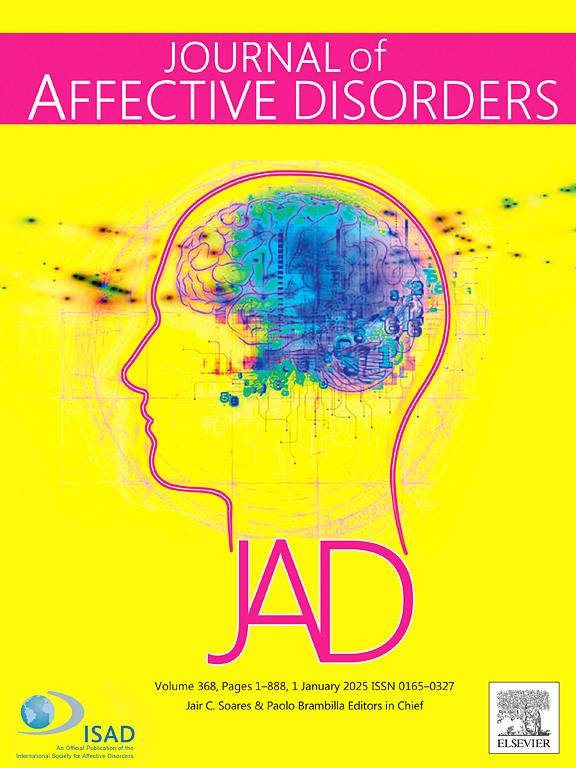Prenatal maternal mood instability and child externalizing problems: An ecological momentary assessment study
IF 4.9
2区 医学
Q1 CLINICAL NEUROLOGY
引用次数: 0
Abstract
This study examines whether exposure to affect fluctuations during fetal development have implications for child psychopathology. To evaluate maternal mood instability, participants (N = 154) completed Ecological Momentary Assessment (EMA) eight times per day across three days at 15-, 25-, and 35-weeks' gestation, and then at two months postpartum. The EMA measured depressive symptoms (Center for Epidemiologic Studies Depression Scale), anxiety (Profile of Mood States), and stress (Perceived Stress Scale). Mood instability was quantified by calculating root mean square of successive differences (RMSSD), which captures both variability and temporal dependency of mood states. When the children were 3 years old, mothers reported on their child's externalizing symptoms with the Child Behavior Checklist (CBCL) and then again at 4.5 years with the Strengths and Difficulties Questionnaire (SDQ). Bivariate correlations indicated a positive association between prenatal mood instability and child externalizing problems at both ages (r = 0.34, r = 0.29, respectively; all p < .05). Sensitivity analyses indicated that mood instability was predictive of child externalizing problems, even after consideration of potential confounding factors, including prenatal and postnatal negative mood level as well as postnatal mood instability. Examination of maternal mood instability, in addition to mood level, provides additional and unique information regarding how maternal mental health affects child psychopathology and underscores the developmental importance of patterns of parental signals even in the very earliest stages of neurodevelopment.
产前母亲情绪不稳定与儿童外化问题:一项生态瞬时评估研究。
本研究探讨胎儿发育期间是否暴露于影响波动对儿童精神病理有影响。为了评估母亲情绪不稳定,参与者(N = 154)在妊娠15周、25周和35周,以及产后2个月,在三天内每天完成八次生态瞬间评估(EMA)。EMA测量抑郁症状(流行病学研究中心抑郁量表)、焦虑(情绪状态概况)和压力(感知压力量表)。通过计算连续差异的均方根(RMSSD)来量化情绪不稳定性,RMSSD捕获了情绪状态的可变性和时间依赖性。当孩子3岁 时,母亲使用儿童行为检查表(CBCL)报告孩子的外化症状,然后在4.5 岁时再次使用优势与困难问卷(SDQ)报告。双变量相关显示,产前情绪不稳定与两个年龄段儿童外化问题呈正相关(r = 0.34,r = 0.29);所有p
本文章由计算机程序翻译,如有差异,请以英文原文为准。
求助全文
约1分钟内获得全文
求助全文
来源期刊

Journal of affective disorders
医学-精神病学
CiteScore
10.90
自引率
6.10%
发文量
1319
审稿时长
9.3 weeks
期刊介绍:
The Journal of Affective Disorders publishes papers concerned with affective disorders in the widest sense: depression, mania, mood spectrum, emotions and personality, anxiety and stress. It is interdisciplinary and aims to bring together different approaches for a diverse readership. Top quality papers will be accepted dealing with any aspect of affective disorders, including neuroimaging, cognitive neurosciences, genetics, molecular biology, experimental and clinical neurosciences, pharmacology, neuroimmunoendocrinology, intervention and treatment trials.
 求助内容:
求助内容: 应助结果提醒方式:
应助结果提醒方式:


